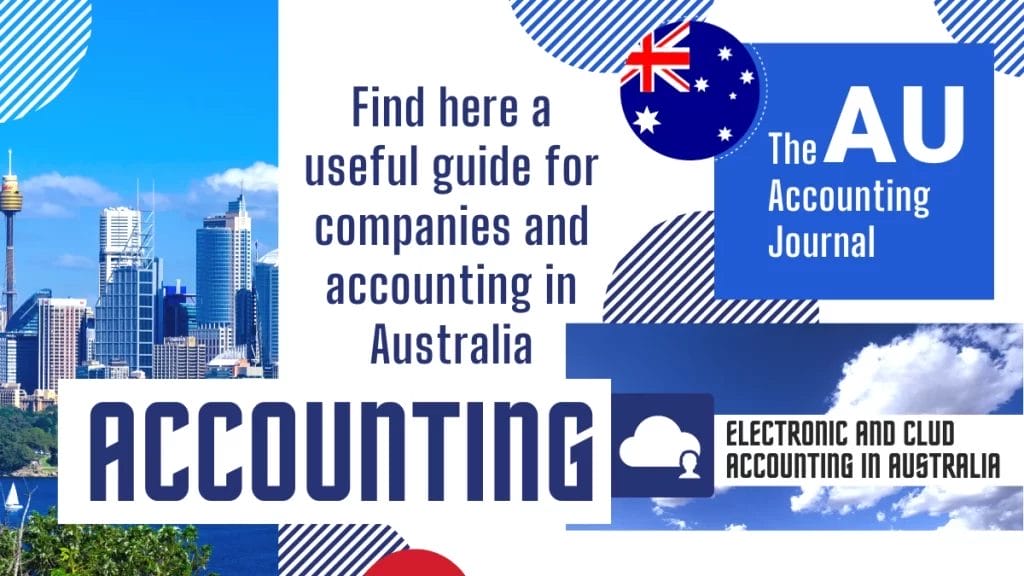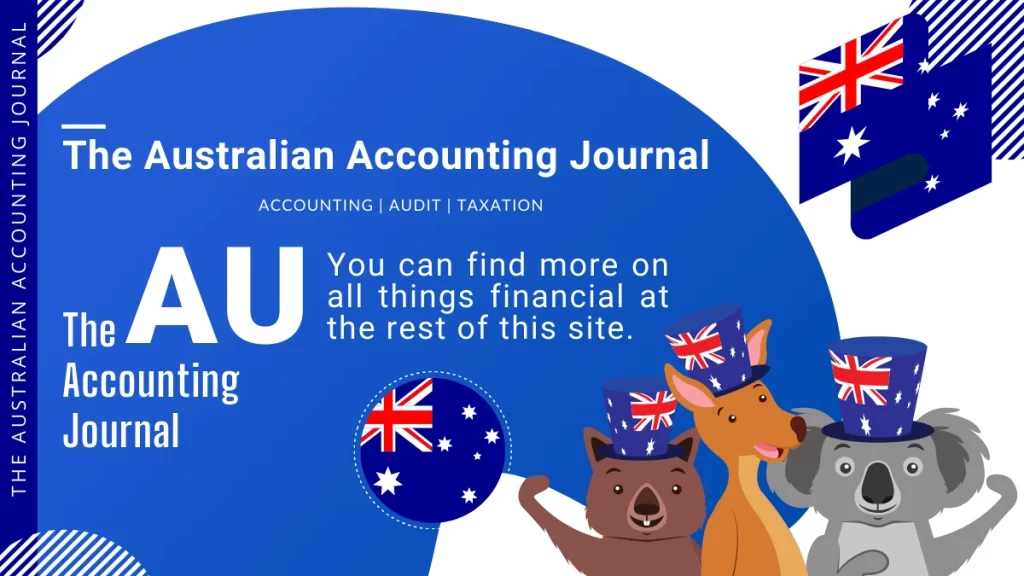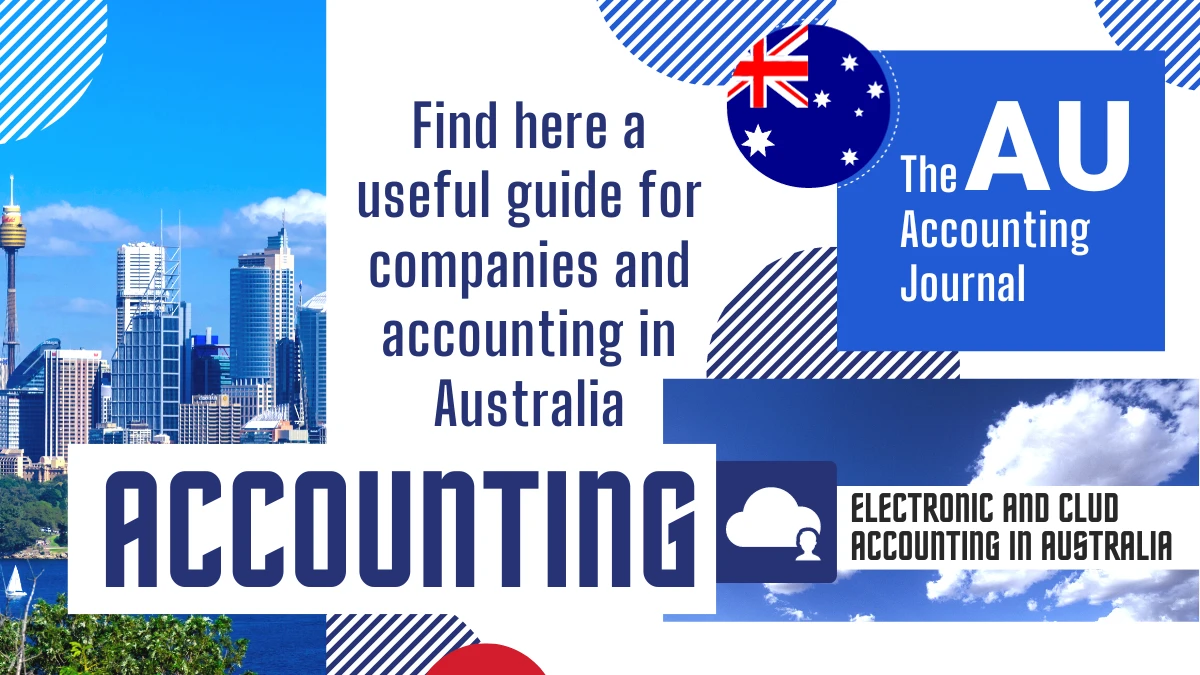Australian Accounting Guide: Find here a useful guide about the Australian accounting system, and how to handle your entity accounting and bookkeeping functions in Australia
You should always have your numbers to support any business decision, and hopefully this Australian accounting guide will be what you need.
Australian accounting guide.
This Australian accounting guide will provide you accounting and planning basics that will help you keep your business on the right track and inspire investors. Therefore, we will start the Australian accounting guide with the business plan that is the foundation of your successful business. Below there are the main points that should include your business plan:
1. Accounting and Financial Advice
Consult an accountant or business advisor about your finances as they might be able to help you to find ways to increase your cash flow.
2. Debt Collection and Agreements
Consider using a reliable debt collection agency if you don’t have time. Before you sell, make sure to have a conditional sale agreement.
3. Accounting for Debt Consolidation
Consider finding lower suppliers and consolidating your debts to get a better rate. At the same time consider obtaining a loan for your business to help you deal with fluctuations in your cash flow.
4. Accounting for Sales of Assets
It is possible to sell unwanted assets and get cash. Leasing your main assets is an option. This allows you to spread out the cost for a longer time. If a buyer isn’t paying or becomes insolvent, you can register a security interest to recover the debt.
5. Accounting for Price Optimisation
Markdowns can be applied to full-priced products or services, to attract sales, or retire surplus stock and discontinued products. If your company is experiencing rising costs, you can increase your prices. You can either markdown or raise prices. However, you must comply with the pricing legislation.
6. New Marketing Strategies
You don’t have to spend more money to put more effort into marketing. The internet and social media are cheaper and more efficient ways to get your message across.
7. Payment Options for Customers
Offering additional payment options will open up new markets and increase your bottom line. Therefore you can consider Credit Cards, E-commerce, Payment systems such as BPAY, BillPay, or PayPal.
8. Government Grants Eligibility
In certain circumstances, you may be eligible to receive a grant for your business, for activities of Expanding, Research, and development, Innovation, or Exporting
9. Accounting for Cash Flow
Make sure to send the correct invoice at the time of purchase, and follow up with customers who have not paid their outstanding payments as soon as possible
The Australian accounting guide is putting an emphasis on your licenses and safety trading.
You may have experienced changes in your business operations during the past year. Check the licenses, permits, and registrations that your business has to make sure you are in good order and avoid any possible fines.
Review your accounting system.
A business is unpredictable. However, a good record-keeping system can help make it easier. This page will explain how to keep track of records, what to keep and how long.
Accounting and bookkeeping have many benefits and they can help you make smarter business decisions by keeping track of the health of your business.
Keep records about tax and superannuation, as these records should include supporting information for your reports-external site and tax returns.
You will need to keep records depending on your business’s tax and superannuation obligations and the structure of the business (sole trader or partnership, company, trust, etc.).
This is required by the Australian Taxation Office (ATO).
- You must keep your records safe and secure.
- Most records must be kept for at least five years. This includes records that you have obtained or prepared, as well as transactions or acts that relate to them.
- If the ATO asks for your records, you must be able to show them.
- All records must be available in English or be easily translated into English.
WE RECOMMEND THAT YOU VERIFY THE RECORD-KEEPING REQUIREMENTS FOR ALL ORGANIZATIONS YOU DEAL WITH.
Accounting records can be kept electronically or on paper. As tax and obligation reporting is becoming more electronic, the ATO recommends businesses adopt electronic record keeping. Once you have your system in place, electronic records will make certain tasks much easier and can save you time.

NOW YOU CAN KEEP ALL YOUR RECORDS ELECTRONICALLY.
Images of business paper and accounting records can be stored electronically by the ATO. However, electronic copies must be a clear and accurate reproduction of original paper records. They also have to meet the ATO’s record-keeping requirements. Once you have saved an image from your original paper records, the paper copies no longer need to be kept.
Whatever you decide, ensure that you keep your records safe, back up your data, and store them in a secure location.
In Australia, most records should be kept for at least five years. Start at the time you prepare or obtain the records or complete the transactions (or act they relate to). However, you may need to keep records longer than five years in certain situations, such as if you have capital assets subject to capital gains taxes.
In addition, companies are required to keep records for seven consecutive years by the Australian Securities & Investments Commission (ASIC).
YOU CAN CHOOSE BETWEEN AN ELECTRONIC OR MANUAL BOOKKEEPING SYSTEM
Manual accounting and bookkeeping.
Manual bookkeeping systems employ a number of books or ledgers accounts. These can be purchased at your local book shop, office supply store, or newsagent.
A manual system has many advantages, including:
- It is cheaper to set up
- It is less likely that data will be corrupted
- If you aren’t familiar with the accounting software, this is a simpler way to use it.
- It is best to avoid duplicate copies of the same records.
Electronic accounting and bookkeeping.
All electronic records are being encouraged by the ATO. It may be a good idea to move electronics now. Digital record-keeping offers several benefits:
- A manual system requires less storage space than a computerized one.
- Automatically calculates amounts.
- Reports are easy to create.
- It is easy to back up and keep safe in the event of theft or fire.
You have a variety of electronic options, including web-based online accounting software, with a range of freemium or free accounting software, advanced tax preparation software, and payroll management software.
Using of accounting software.
You can use either off-the-shelf software or custom-made software accounting packages to help you:
- Keep track of your transactions
- Calculate the goods and services tax (GST).
- Update ledgers
- Prepare financial statements
- Generate invoices
Ask your accountant or business advisor to recommend software. Software must comply with Standard Business Reporting- External Site (SBR).
Web-based cloud accounting software.
Using a web-based cloud accounting system:
- You can update your books from anywhere in the world;
- Automatic off-site storage of your financial records;
- Digital options can be cheaper.
It does come with security risks. Learn more about the benefits of cloud accounting software, and services-external site at the ATO website.
Spreadsheet accounting.
Do you feel confident with a computer but lack the financial resources to purchase an accounting program? You might consider creating a series of spreadsheets to manage your accounts.
For more information about electronic and manual record-keeping systems, visit the ATO website.
Point-of-sale (POS) systems.
You may need to upgrade or update your POS system as your business grows. These systems are computer systems that can help you manage sales and record-keeping.
POS systems can be integrated with advanced accounting automation systems, and depending on which system you select you can:
- Adjust inventory and sales records
- Make receipts, tax invoices, and invoices.
- Transact EFTPOS transactions and sell credit and debit cards
Before you buy a POS system, think about what features your business requires.
Select a professional to handle your company’s accounting and bookkeeping.
A good accountant or bookkeeper will help maximize your business’s income. They can help you manage your books and improve your financial health.
These are some of the financial professionals you should consider:
- Accountant: Can help you with your financial needs, including the preparation of financial statements, tax management, and financial and business advice.
- Bookkeeper: Can keep track of your financial transactions, manage your banking, chase overdue payments, pay wages, and prepare financial statements.
- Agent for business activity statement (BAS). They can assist you in preparing and lodging your BAS. They are registered professionals and experts in their fields.
They must have the appropriate qualifications to assist you with your accounting. A member of an accounting and bookkeeping professional organization is also a must. You can check the Tax Practitioners Board’s website to see if your tax advisers, BAS agents, or tax (financial), advisors are registered.
EVEN IF YOU HIRE A PROFESSIONAL TO MANAGE YOUR ACCOUNTS OR BOOKS, YOU ARE STILL RESPONSIBLE FOR ALL FINANCIAL DECISIONS.
If you found the Australian accounting guide article helpful, please go to the rest of the website for more about accounting for charities audit and reporting in Australia, some of the audit exemptions in Australia, an overview of Financial Reporting in Australia, understanding the Australian income tax, or more accounting and financial topics in International Accounting, Audit, Taxation, Accounting Software, Cloud Accounting and Accounting Automation.
Read this article in: English – Dutch – French – German – Spanish



